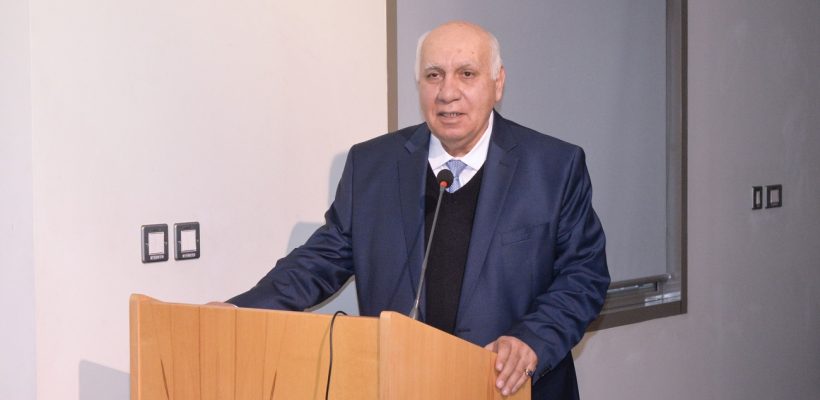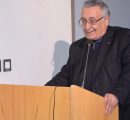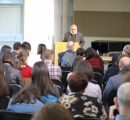
Book Presentation: Westernization in Hellenistic and Early Medieval Armenia: History and Historical Texts
2 min readYEREVAN, Armenia ‒ On March 15, 2019, Professor Albert Stepanyan, Doctor of Historical Sciences, Adjunct Lecturer at the American University of Armenia (AUA), Head of the Department of World History at the Yerevan State University (YSU) and President of the Armenian Association of World History (NGO), presented his book “Westernization in Hellenistic and Early Medieval Armenia: History and Historical Texts’’ at AUA.
The book is conceived and brought about as a composite monograph, a characterization that designates its genre and structure. As for content, the book depicts a gradual shift of ideas and concepts of history in Hellenistic and Early Medieval Armenia. Despite carefully planned repetitions, an advanced reader can easily discern the perspectives and principal results of the narrative.
The historical narratives are discussed in the context of epic, rationalistic and metaphysical world view complexes that replaced one another or (more frequently) existed simultaneously under each other’s influence. Each system was constructed on the basis of its inherent comprehensions of historical time and space, causality and truth, virtue and moral value, degradation and vice.
Professor Gregory Areshian discussed the monograph in the course of the development in historiography starting from the 18th century both in European and Armenian contexts. He especially appreciated the novelty of the monograph in the light of historical thought of the Annales school. In his words, “The monograph opens new horizons of interpreting, reasoning and understanding of the process of genesis of Western canon of historiography in Armenia. The two waves of Hellenism are held as the important background of Armenian historiography.”
Professor Ruben Safrastyan, Director of the Institute of Oriental Studies, drew attention to the fact that the author has opened a multi-dimensional picture of the historical paradigm in Armenia from descriptive epic tales to the metaphysical comprehension of history: “The metaphysical level of history indicates the more profound levels of history giving an answer to the question of what could be in history according to historical necessity or incidence.”
Professor Edik Minasyan, Dean of the YSU Faculty of History, highlighted the aspect of the monograph regarding the role of political and cultural elite in creating the perspective of the past and present, which connotes the essence of historical study.
Lilit Minasyan, Associate Professor at the YSU Faculty of World History and Vice-President of the Armenian Association of World History, highlighted the three important features of the monograph. First, it is composed according to a clear scenario relevant to its essence. It gives an opportunity to trace the development of historical thought in Armenia from imaginative epic tales to high metaphysical concepts. Second, dialogue is used as the main feature of the narrative. As a result of that, an advanced reader has the opportunity to enter into the author’s space and take his or her part in the composition. All this makes the monograph multi-dimensional, a feature that is a novelty in modern Armenian historiography. Third, the concept of the monograph is based on the exceptional role of elite groups (intellectual and political) in creating the perspective of national history and culture. This approach is very prevalent in our days as well.
Founded in 1991, the American University of Armenia (AUA) is a private, independent university located in Yerevan, Armenia, and affiliated with the University of California. AUA provides a global education in Armenia and the region, offering high-quality graduate and undergraduate studies, encouraging civic engagement, and promoting public service and democratic values.










